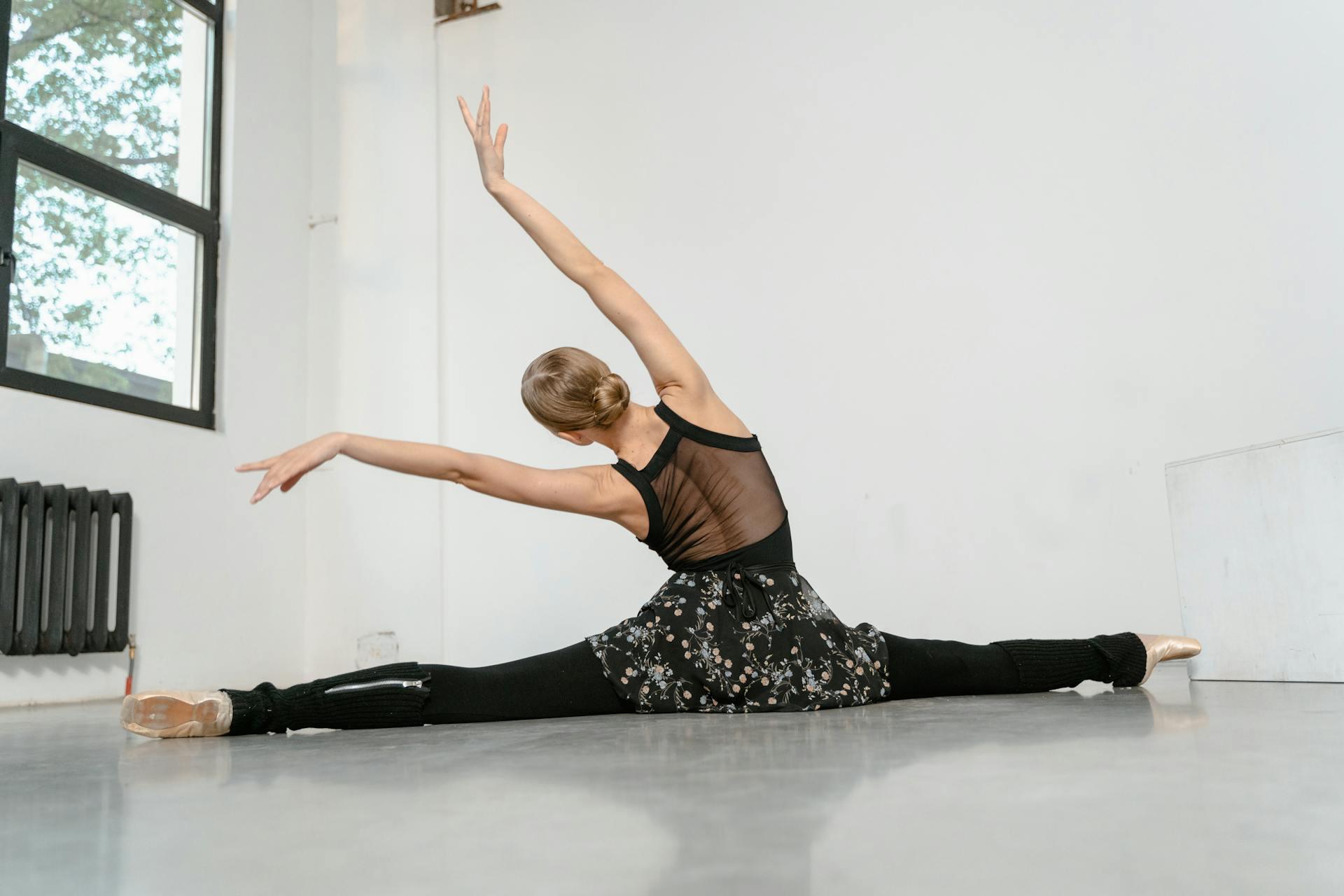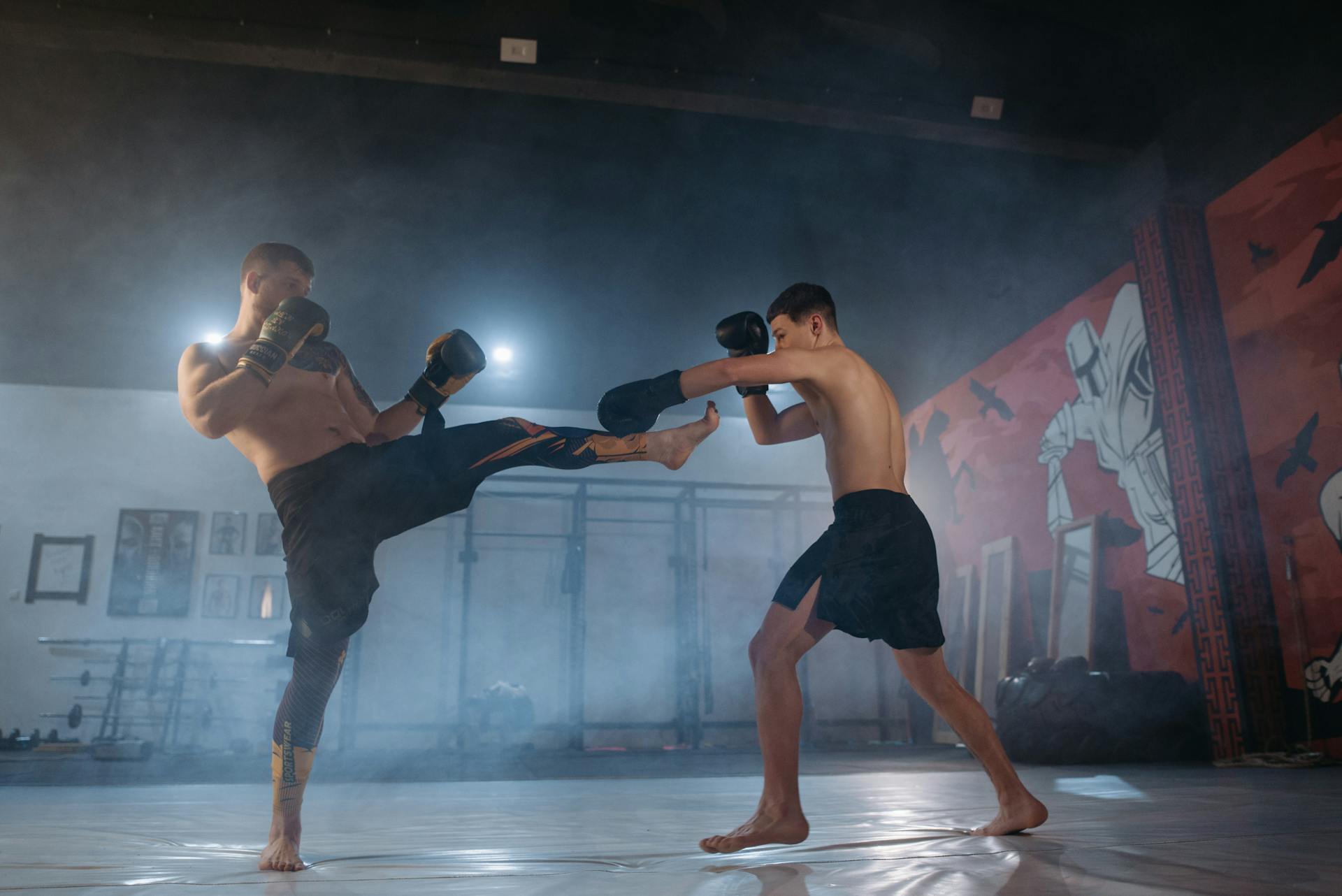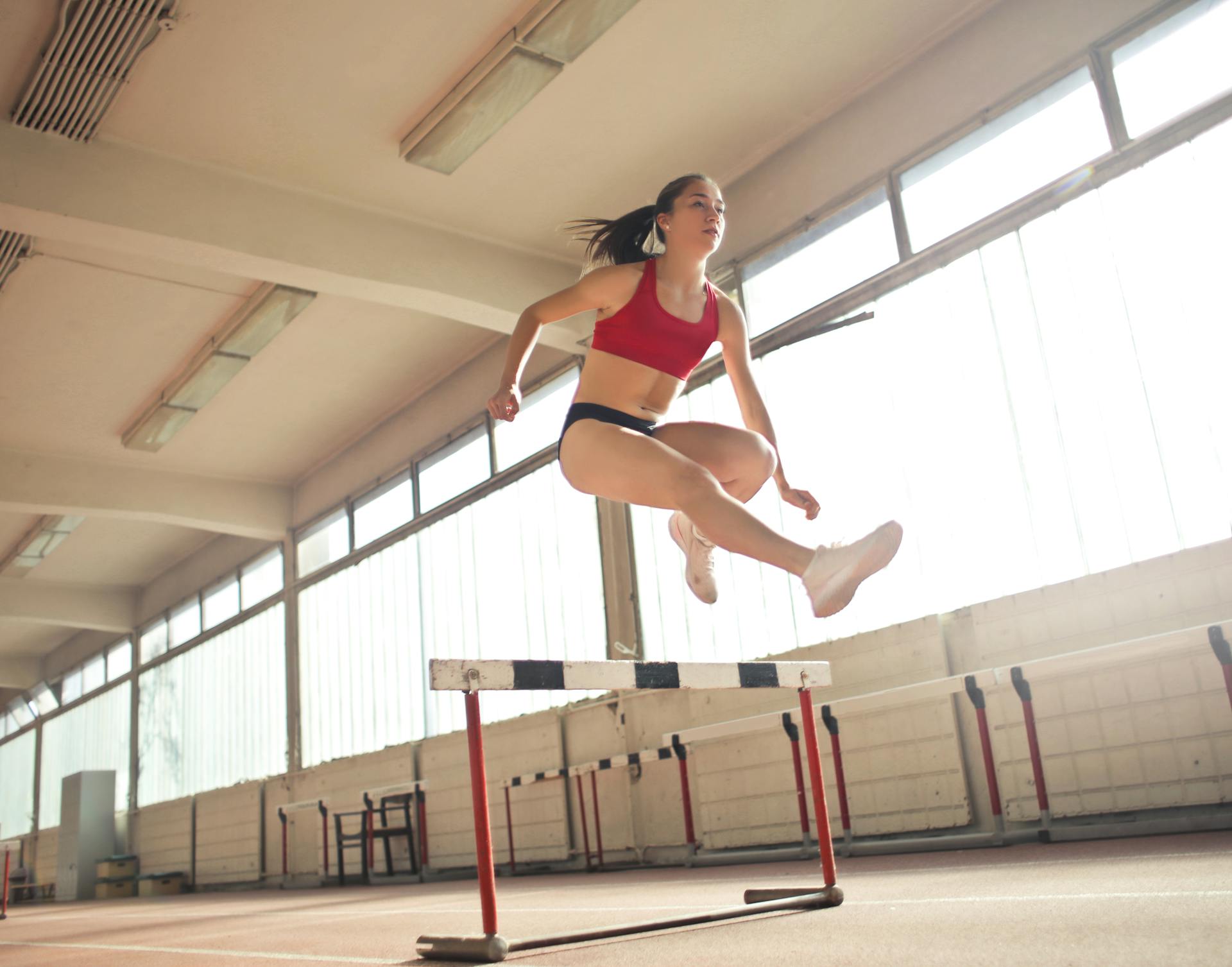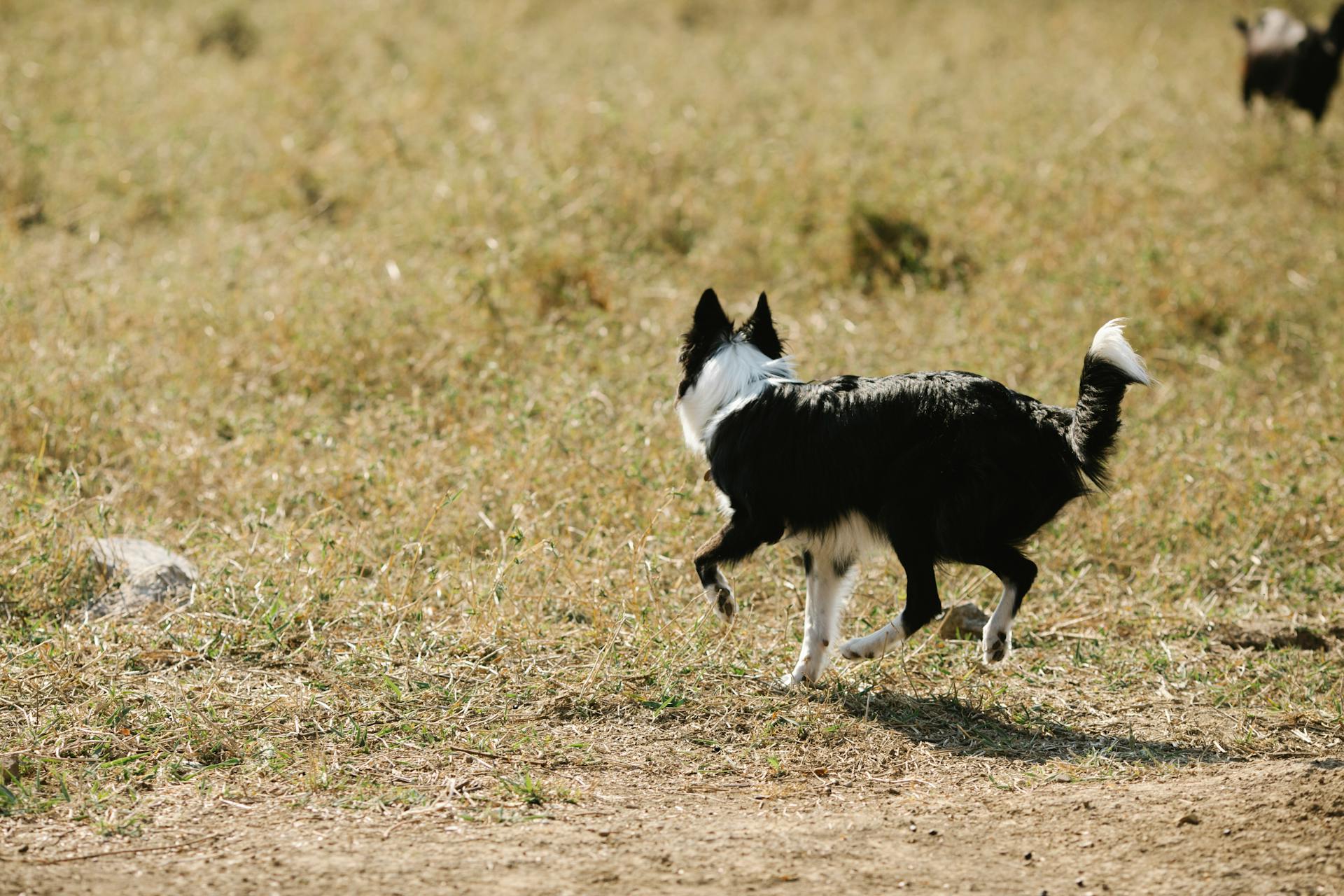
If you're looking for a dog that's up for the challenge of agility training, you'll want to consider breeds with high energy levels and a strong work ethic.
Good agility dogs are often a mix of athleticism and intelligence, which makes them well-suited for this type of training.
Some popular breeds for agility training include Border Collies, Australian Shepherds, and Poodles, all of which are known for their high energy levels and strong work ethic.
These breeds are not only agile, but also highly intelligent and trainable, making them a great fit for agility training.
Suggestion: Is High Protein Dog Food Good for Dogs
Benefits of Agility
Agility training is a fantastic way to exercise your dog and strengthen your bond with them. By practicing agility exercises, you'll not only get a workout, but your dog will too.
You'll have a blast doing agility training with your dog, and it's an amazing opportunity to bond with them. This bonding time, combined with the release of energy, makes for more relaxed, content, and obedient dogs.
Agility training can help build confidence in your dog, which in turn lowers anxieties. Learning life skills in a playful way allows your pup to shed stress, and teaching them through positive reinforcement tells them you've got their back.
Here are some of the many benefits of agility training:
- Exercise for both you and your dog
- Improved bonding and a more relaxed, content, and obedient dog
- Increased confidence and reduced anxiety
- Teaching life skills in a playful way
By starting with private sessions or on familiar turf, you can help your dog feel more comfortable and confident, especially if they're not a fan of other dogs.
Getting Started
To get started with agility training, find a local class and trainer that focuses on positive-reinforcement, reward-based training. This approach is crucial for a successful experience with your dog.
Look for certifications and ask questions of your potential trainer to ensure they're knowledgeable and up-to-date on the best training methods. A good trainer will know how to keep your dog safe and happy.
Start slow with your dog's pace, especially if they're nervous. Begin with one obstacle and gradually build up to more. Use treats and toys to reinforce desired behaviors and make the experience enjoyable for both of you.
Consider reading: How to Become a Trainer of Service Dogs
A good agility training facility should have well-maintained equipment and suitable flooring to prevent injuries. Artificial turf or rubber matting is ideal for performance sports like agility.
Choose an instructor who communicates well and gives equal attention to each dog/handler team. A good instructor will create a positive and supportive environment for all participants.
The ideal class size should allow for each dog to get plenty of turns and attention from the instructor. Safety should always be a top priority, especially for beginning or "green" dogs.
DIY Agility Projects
Creating a DIY agility course at home is a fun and accessible way to train your dog. You can use items you already have around the house or find for free online.
Remember, the #1 rule is to keep it fun and stress-free. Don't stress about perfection - just enjoy the process with your dog.
Agility training is all about taking it one step at a time, working in baby steps, and celebrating small victories.
Using Dog Equipment
The A-frame is a tall structure with an apex that can be set at 5' 6" or as high as 6' 3" at the championship level.
The dog walk is a raised, narrow plank that the dog must cross quickly without sacrificing safety.
Jumps are a variety of obstacles, including the simple bar jump and the broad jump with wide boards on the ground.
The weave poles are challenging for dogs to learn because the weaving motion is unnatural to them.
There are two types of tunnels: the open tunnel, a tube through which the dog runs as fast as possible, and the closed tunnel, or chute, which looks like a giant wind sock.
For more insights, see: Dog Tunnel Training
5 DIY Projects to Try at Home
Don't stress! Be patient with your DIY agility training, as it's all about fun.
Remember to start small and work in baby steps, just like the article suggests.
You can create a DIY home agility course using things you already have around the house.
The first DIY project to try at home is a simple obstacle course using household items, like couch cushions and chairs.
Another DIY project is to use items like hula hoops and tunnels to create a fun and challenging course.
You can also repurpose items like broom handles and pool noodles to create obstacles.
Remember, the key to DIY agility training is to be creative and have fun with it.
4
As you start building your DIY agility course, it's essential to focus on handling skills. Your ability to communicate with your dog effectively is crucial for success, both on the course and in public.
Handling skills include getting your dog to understand voice commands and nonverbal cues for various actions. This includes heel, walk, jog, and moving to the right or left.
You'll want to practice these skills regularly to build relational and coordination skills that will serve you both well in public and on the agility course.
A unique perspective: Is a Public Access Test Required for Service Dogs
Here are some specific handling skills to focus on:
- Heel
- Walk
- Jog
- Move to my right (or away from me on my right)
- Move to my left (or away from me on my left)
- Walk (jog) in front of me
- Walk (jog) behind me
These skills will help you navigate the agility course with confidence and also make public outings with your dog a breeze.
Training and Handling
Handling your dog efficiently on course is crucial for a good agility dog. A motion-based method of handling is a great way to achieve this.
In a class taught by Judy Reilly, you can learn the skills needed to handle your dog efficiently on course. Exercises like the 6 recall to heel positions will be covered.
Properly executing these exercises on course is key to a smooth run. This class is open to both novice and advanced level dogs whose handlers need to fine tune their skill.
Training Benefits Humans
Agility training is a sport that's not just good for dogs, but also has numerous benefits for their human companions. Any and all breeds, including mixed-breeds, love agility courses, making it an inclusive activity for dog owners.
You might enjoy: Good Dog Breeds for Other Dogs

Dogs should be between one and two years old before true agility training begins, which means owners need to be patient and wait for the right time to start training. This age range allows the dog to mature physically and emotionally, reducing the risk of injury.
Dogs and owners should have basic commands down already, such as sit, stay, lie down, come, and heel, before starting agility training. This foundation in obedience commands is essential for a successful and enjoyable experience.
As owners participate in agility training with their dogs, they'll get a workout too. The exercises can be modified to honor the owner's needs, making it an accessible activity for people of all fitness levels.
Participating in agility training with your dog provides an opportunity to bond and strengthen your relationship. The combination of bonding time and the release of energy makes for more relaxed, content, and obedient dogs, which in turn benefits the owners as well.
Handling Basics with Judy Reilly
Judy Reilly's Handling Basics class is a great place to start if you're new to agility training or want to improve your skills. This novice level handling class will teach you the skills needed to handle your dog efficiently on course.
You'll learn a motion based method of handling, which will help you and your dog move smoothly through the course. This approach will make navigating obstacles a breeze.
In the class, you'll practice the 6 recall to heel positions, which are essential for efficient handling. These exercises will be executed on course, so you can see how they apply in real-life situations.
Handling Basics with Judy Reilly is also suitable for advanced level dogs whose handlers need to fine tune their skills.
Frequently Asked Questions
What is the best dog in agility?
The top breed for agility training is the Border Collie, known for its exceptional speed, agility, and obedience. This breed is often considered the gold standard for agility competitions.
What age should a dog start agility?
Dogs typically start agility training between 12-18 months of age, after they've reached full physical maturity. Consult with a veterinarian or experienced trainer to determine the best start time for your dog
Sources
Featured Images: pexels.com

